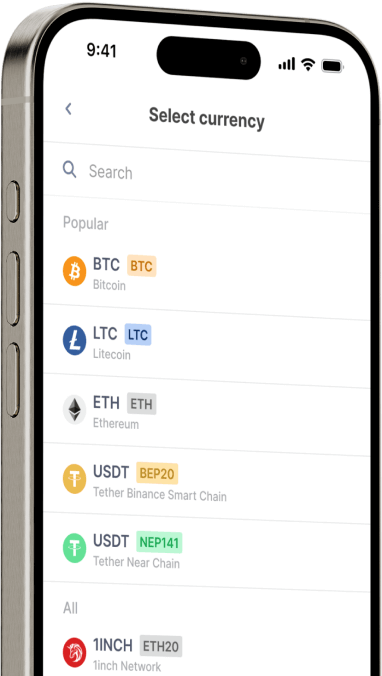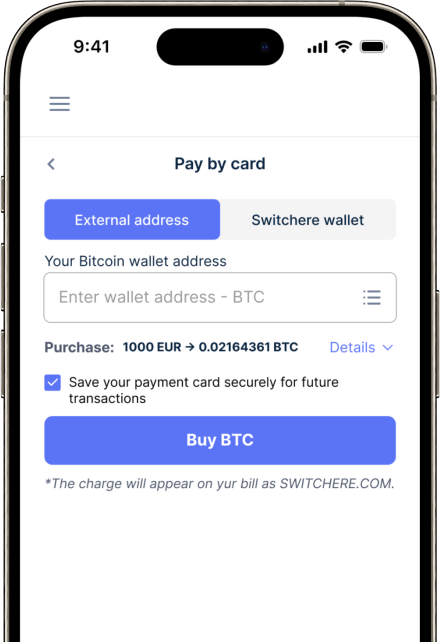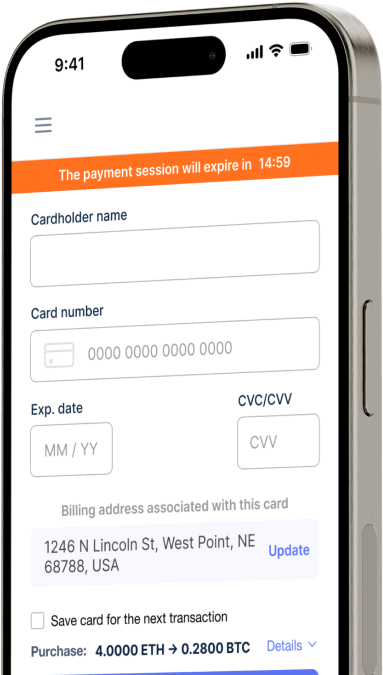전환하다
Indonesian Rupiah (IDR)에서 Celsius (CEL)로 즉시
Switchere에서 Celsius (CEL)로 Indonesian Rupiah (IDR)를 간편하게 구매하고 빠르고 안전한 거래의 혜택을 누리세요.
정보
Celsius (CEL)
셀시우스 네트워크는 자체 CEL 토큰을 통해 전통적인 은행과 디지털 자산 세계 간의 격차를 해소하기 위해 설계된 주요 중앙화 금융(CeFi) 플랫폼으로 부상했습니다. 주요 기능은 사용자가 암호화폐 보유 자산으로 수익을 창출하고 암호화폐 담보 대출을 받을 수 있도록 하는 것이었습니다. 이 플랫폼은 수탁 기반으로 운영되었으며, 기관 대출자에게 대출 활동을 통해 이자 수익을 창출하기 위해 사용자 자금을 관리했습니다. 이 모델은 복잡한 디파이 프로토콜을 탐색하지 않고 자산을 운용하고자 하는 암호화폐 보유자들에게 사용자 친화적인 대안으로 자리매김했습니다.
CEL 토큰은 충성도 및 보상 시스템의 핵심이었습니다. 유틸리티 토큰으로서 CEL을 보유하고 사용하는 것은 이자 및 대출에 대한 우대 금리와 같은 셀시우스 생태계 내에서 실질적인 혜택을 제공했습니다. 사용자는 예치된 자산에 대해 더 높은 수익률을 받고 대출에 대해서는 더 낮은 금리를 적용받을 수 있었으며, 보상은 종종 매주 CEL 형태로 분배되었습니다. 이 토크노믹스 구조는 사용자 충성도를 장려하고 네이티브 자산에 대한 수요를 촉진하기 위해 설계되었습니다. 그러나 이 플랫폼은 심각한 운영상의 문제와 시장 압력에 직면하여 결국 챕터 11 파산 신청으로 이어졌으며, 이는 사용자들에게 깊은 영향을 미치고 CeFi 대출 산업의 위험에 대한 담론을 재구성하는 계기가 되었습니다.
다른 150개 이상의 암호화폐를 Indonesian Rupiah (IDR)에 구매하기
Indonesian Rupiah (IDR)의 다른 코인
-
IDR에 대한 ZRX
-
IDR에 대한 1INCH
-
IDR에 대한 AAVE
-
IDR에 대한 ACH
-
IDR에 대한 ALGO
-
IDR에 대한 TLM
-
IDR에 대한 ANKR
-
IDR에 대한 APE
-
IDR에 대한 NFT
-
IDR에 대한 API3
-
IDR에 대한 APT
-
IDR에 대한 ARPA
-
IDR에 대한 AUDIO
-
IDR에 대한 AVAX
-
IDR에 대한 AVAX
-
IDR에 대한 AXS
-
IDR에 대한 BADGER
-
IDR에 대한 BAL
-
IDR에 대한 BNT
-
IDR에 대한 BAT
-
IDR에 대한 BNB
-
IDR에 대한 BSW
-
IDR에 대한 BSV
-
IDR에 대한 BLUR
-
IDR에 대한 BONE
-
IDR에 대한 CTSI
-
IDR에 대한 CELR
-
IDR에 대한 CELO
-
IDR에 대한 CEL
-
IDR에 대한 LINK
-
IDR에 대한 CHZ
-
IDR에 대한 CHR
-
IDR에 대한 C98
-
IDR에 대한 COMP
-
IDR에 대한 CFX
-
IDR에 대한 PEOPLE
-
IDR에 대한 CVX
-
IDR에 대한 ATOM
-
IDR에 대한 CTC
-
IDR에 대한 CRV
-
IDR에 대한 DAI
-
IDR에 대한 DASH
-
IDR에 대한 MANA
-
IDR에 대한 DENT
-
IDR에 대한 DGB
-
IDR에 대한 DYDX
-
IDR에 대한 XEC
-
IDR에 대한 EOS
-
IDR에 대한 ETC
-
IDR에 대한 ENS
-
IDR에 대한 ETHW
-
IDR에 대한 FET
-
IDR에 대한 FIL
-
IDR에 대한 FLOKI
-
IDR에 대한 GALA
-
IDR에 대한 GNO
-
IDR에 대한 ONE
-
IDR에 대한 HBAR
-
IDR에 대한 HOT
-
IDR에 대한 HOOK
-
IDR에 대한 ICX
-
IDR에 대한 ILV
-
IDR에 대한 IMX
-
IDR에 대한 INJ
-
IDR에 대한 ICP
-
IDR에 대한 IOST
-
IDR에 대한 IOTX
-
IDR에 대한 JASMY
-
IDR에 대한 JST
-
IDR에 대한 KAVA
-
IDR에 대한 KCS
-
IDR에 대한 KSM
-
IDR에 대한 KNC
-
IDR에 대한 LDO
-
IDR에 대한 LQTY
-
IDR에 대한 LPT
-
IDR에 대한 LOOKS
-
IDR에 대한 LRC
-
IDR에 대한 LUNA
-
IDR에 대한 MKR
-
IDR에 대한 MASK
-
IDR에 대한 EGLD
-
IDR에 대한 ALICE
-
IDR에 대한 NEAR
-
IDR에 대한 XEM
-
IDR에 대한 NEXO
-
IDR에 대한 NOT
-
IDR에 대한 NMR
-
IDR에 대한 OKB
-
IDR에 대한 OMG
-
IDR에 대한 ONT
-
IDR에 대한 EDU
-
IDR에 대한 OP
-
IDR에 대한 OGN
-
IDR에 대한 CAKE
-
IDR에 대한 PAXG
-
IDR에 대한 PENDLE
-
IDR에 대한 DOT
-
IDR에 대한 POL
-
IDR에 대한 QTUM
-
IDR에 대한 QNT
-
IDR에 대한 RDNT
-
IDR에 대한 XRD
-
IDR에 대한 RVN
-
IDR에 대한 REN
-
IDR에 대한 RSR
-
IDR에 대한 RLC
-
IDR에 대한 RPL
-
IDR에 대한 SFP
-
IDR에 대한 SHIB
-
IDR에 대한 SKL
-
IDR에 대한 SXP
-
IDR에 대한 STND
-
IDR에 대한 STG
-
IDR에 대한 XLM
-
IDR에 대한 GMT
-
IDR에 대한 STORJ
-
IDR에 대한 STMX
-
IDR에 대한 SUSHI
-
IDR에 대한 SNX
-
IDR에 대한 USDT (Polygon)
-
IDR에 대한 USDT (AVAC)
-
IDR에 대한 USDT (BEP20)
-
IDR에 대한 USDT (ERC20)
-
IDR에 대한 USDT (SPL)
-
IDR에 대한 USDT (NEP141)
-
IDR에 대한 USDT (FA2)
-
IDR에 대한 USDT (TRC20)
-
IDR에 대한 USDT (JETTON)
-
IDR에 대한 XTZ
-
IDR에 대한 GRT
-
IDR에 대한 SAND
-
IDR에 대한 TFUEL
-
IDR에 대한 THETA
-
IDR에 대한 RUNE
-
IDR에 대한 TON
-
IDR에 대한 TUSD (BEP20)
-
IDR에 대한 TUSD (TRC20)
-
IDR에 대한 TWT
-
IDR에 대한 UOS
-
IDR에 대한 UMA
-
IDR에 대한 UNI
-
IDR에 대한 USDC (Polygon)
-
IDR에 대한 USDC (SPL)
-
IDR에 대한 USDC (OP)
-
IDR에 대한 USDC (BEP20)
-
IDR에 대한 USDC (AVAC)
-
IDR에 대한 USDC (ARB)
-
IDR에 대한 USDC (ERC20)
-
IDR에 대한 VET
-
IDR에 대한 VRA
-
IDR에 대한 WAXP
-
IDR에 대한 WOO
-
IDR에 대한 WLD
-
IDR에 대한 WBTC
-
IDR에 대한 WMINIMA
-
IDR에 대한 XDC
-
IDR에 대한 YFI
-
IDR에 대한 YGG
-
IDR에 대한 ZIL
Celsius (CEL) 구매 방법
자주 묻는 질문
-
셀시우스 네트워크의 역사를 고려할 때 IDR/CEL 거래 쌍은 무엇을 의미하나요?
IDR/CEL 쌍은 인도네시아 루피아(IDR)와 CEL 토큰 간의 환율을 나타냅니다. CEL은 이전 암호화폐 대출 플랫폼인 셀시우스 네트워크의 네이티브 유틸리티 토큰이었습니다. 플랫폼의 챕터 11 파산으로 인해 이 쌍을 거래하는 것은 현재 매우 투기적이며, 수익 창출을 위한 원래의 유틸리티보다는 구조 조정 후 토큰의 잠재적 미래 가치에 대한 시장 심리를 반영합니다.
-
셀시우스 파산 이후 IDR/CEL 쌍을 거래할 때의 주요 위험은 무엇인가요?
주요 위험은 극심한 가격 변동성과 불확실한 장기적 유틸리티입니다. CEL 토큰의 가치는 더 이상 작동하는 대출 플랫폼의 보상 시스템과 연결되어 있지 않습니다. 가격은 거의 전적으로 파산 절차의 결과와 새로운 법인의 계획에 대한 투기에 의해 결정됩니다. 또한 많은 주요 거래소가 토큰을 상장 폐지하여 상당한 가격 슬리피지 없이 대량을 매매하기가 더 어려워졌기 때문에 상당한 유동성 위험도 있습니다.
-
인도네시아에서 IDR을 법정화폐 온램프로 사용하기 위한 특정 KYC 요구사항이 있나요?
예, 인도네시아의 모든 BAPPEBTI 규제 암호화폐 거래소는 엄격한 고객 확인(KYC) 및 자금 세탁 방지(AML) 규정을 시행합니다. 디지털 자산 구매에 인도네시아 루피아(IDR)를 사용하려면 인증 절차를 완료해야 합니다. 이는 일반적으로 정부 발급 신분증(KTP), 생체 인증을 위한 셀카, 때로는 주소 또는 소득 증빙 자료를 제출하는 것을 포함합니다. 이러한 조치는 안전한 거래와 IDR 입출금을 위한 은행 계좌 연결을 위해 필수적입니다.
-
암호화폐 거래소에서 인도네시아 루피아(IDR)로 CEL을 어떻게 구매할 수 있나요?
인도네시아의 BAPPEBTI 규제를 받는 거래소에서는 특히 IDR/CEL 직접 거래 쌍을 찾기가 매우 어렵습니다. 일반적인 절차는 여러 단계의 법정화폐 온램프를 포함합니다: 1. 은행 송금이나 전자 지갑을 통해 Indodax나 Tokocrypto와 같은 현지 거래소에 IDR을 입금합니다. 2. USDT나 BTC와 같은 주요 암호화폐를 구매합니다. 3. 해당 디지털 자산을 CEL 토큰을 아직 상장하고 있는 국제 거래소나 탈중앙화 거래소(DEX)로 전송합니다. 4. USDT/BTC에서 CEL로 거래를 실행합니다. 거래하기 전에 항상 오더북에서 유동성을 확인하십시오.
-
셀시우스 네트워크의 CeFi 플랫폼에서 CEL 토큰의 원래 유틸리티는 무엇이었나요?
원래 CEL 토큰은 셀시우스 네트워크의 중앙화 금융(CeFi) 생태계의 중심이었습니다. 그 유틸리티에는 사용자에게 암호화폐 담보 대출에 대한 더 나은 금리를 제공하고 이자 발생 계좌에서 더 높은 수익률을 제공하는 것이 포함되었습니다. 사용자는 CEL로 보유한 포트폴리오의 비율에 따라 로열티 등급을 달성하여 점진적으로 더 나은 혜택을 누릴 수 있었습니다. 또한 사용자는 주간 보상을 CEL 토큰으로 받아 더 높은 이율을 얻을 수 있도록 선택할 수 있었으며, 이는 수익 창출 모델의 핵심 부분이었습니다.
-
파산 후 셀시우스 법인에서 CEL 토큰의 역할은 무엇인가요?
셀시우스 구조 조정 계획은 새로운 비트코인 채굴 회사인 Ionic Digital의 설립과 특정 채권자에게 유동 암호화폐 및 새 회사의 지분을 분배하는 것으로 이어졌습니다. 이 새로운 구조에서 CEL 토큰의 역할은 명확하게 정의되지 않았으며 그 유틸리티는 사실상 사라졌습니다. 시장 가치는 현재 새로운 경영진이나 커뮤니티 주도 이니셔티브에 의해 도입될 수 있는 잠재적이지만 확인되지 않은 미래 사용 사례나 가치 축적 메커니즘에 대한 추측에 의해 주도됩니다. Ionic Digital 내에서는 공식적인 기능이 없습니다.




